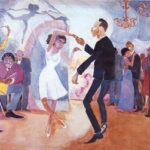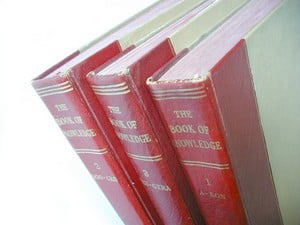Claude McKay’s poem “Harlem Shadows” comes from one of his volumes of poetry also entitled “Harlem Shadows” (published in 1922), which initiated the new angry and defiant attitude in African-American writing toward racial prejudice. This volume of poetry was one of the catalysts for the commencement of the Harlem Renaissance and also began McKay’s style of writing humanist poetry within a racial context. Unlike Langston Hughes’ tendency to bring shame upon racism, McKay’s harsh language and intense imagery demands respect for African-Americans. The title of the poem, “Harlem Shadows,” portrays the blindness, ignorance, and indifference of (white American) society toward the suffering of the young African-American girls who basically live in shadows from society and are forced to live a life of prostitution. In the poem, “Harlem Shadows,” McKay describes in frustration the plight of young black girls. Furthermore, McKay maintains that these girls deserve respect because not only are they a part of McKay’s ‘sacred’ and ‘fallen’ race (line 16), but because of the disgraceful and impoverished lifestyle that society has forced them to live.
The first stanza of “Harlem Shadows” seems to set forth the setting and tone of the poem. The tone is one of heaviness and melancholy (a lamentation by the speaker). In the first line, the speaker says “I hear the halting footsteps of a lass,” which infers a few likelihoods. (line 1). First, since the speaker “hears” the footsteps, he must be among the young girls or places himself there, probably observing them. One of the most important implications is through the word “lass,” which means young woman or girl; the “lass” is probably young enough that she should still have her childlike innocence. Halting footsteps” is referring to girls stopping when ‘customers’ come by to receive the girls’ services.
The next three lines describe more setting and some movement: “In Negro Harlem when the night lets fall/Its veil. I see the shapes of girls who pass/To bend and barter at desire’s call” (lines 2-4). The literal setting is “Negro Harlem” because it is a location with the African-American underclass, to which McKay strives in his poetry to show an “attitude of sympathy, compassion, and respect” (Miller online). The line “when night lets fall/Its veil” reflects the darkness in the setting, when people cannot (or will not) see the truth of what is going on in “Negro Harlem”; like the title of the poem, the words “night” and “veil” infer society’s blindness and indifference to the plight of these impoverished young prostitutes. According to Cooper, “veil” refers to a “pre-enlightened state, concealment, ignorance,
The line “To bend and barter at desire’s call” seems to have two possible meanings (line 4). The first, in which “to bend” likely refers to a girl bending over to the open window of a customer’s car then ‘bartering’ her prostitution services to the paying men. The second possible meaning has sexual connotations, where “to bend” means sexually bending the body (either while sleeping with a customer or to advertise the girl’s body), and “to barter” means that the girls barter their bodies and virginity in exchange for a means to live. The deeper significance within this second meaning is that while ‘barter’ means ‘to trade goods or services without the exchange of money,’ the girls are receiving money for their services. However, while the ideal result of true bartering leaves both parties equally content, the bartering in this poem does not really leave the young girls content-they do not get anything substantial out of the exchange, except for “dishonor and disgrace” (line 14).
The last two lines of the first stanza describe further action with stark images: “Ah, little dark girls who in slippered feet/Go prowling through the night from street to street!” (lines 5-6). Little dark girls” infers that the girls are probably still children (who should still have their innocence) and that they are not white-their ‘dark’ color is another hint to explain why society is blind and indifferent to their hardships. The girls’ “slippered feet” discloses the fact that they are both coming from bed and are heading to bed (after they pick up a customer from the street). The term “prowling” typically refers to actively searching for something at night, and in the case of this poem, the girls are obviously looking for business so that they can earn a living by the only means they are allowed.
Cooper’s notes on feet help to reveal the significance of feet (mentioned 7 times in this poem): “Feet/Foot” refers to a willing service, humility, lowly, and a person’s path of experience (66). The young prostitutes in the poem are depicted as humble, lowly, and offering their willing services. According to The Penguin Dictionary of Symbols, feet are ranked fifth for sexual attractiveness (339). The two most important significances of feet in this poem seem to be that all feet walk a certain path of life that is representative of the person’s experiences (prostitution in the case of the girls in this poem); and second, that there is a sexual connotation to feet, which plays an important role in the lifestyles of these young girls.
Also, the last line of each stanza ends with the phrase “from street to street,” which emphasizes the poverty of the girls who are forced to live on the streets (where they make a living). The phrase also emphasizes the monotony, hardship, and burden of living such a lifestyle. In the first stanza, the girls are prowling; in the second stanza, the girls are trudging; and in the third stanza, the girls are “wandering from street to street” (line 18). This movement from “prowling” to “trudging” to “wandering” demonstrates an increasing heaviness to the girls’ burden.
The second stanza of “Harlem Shadows” depicts with even more heaviness of tone the hardships and burdens that the girls endure. The first two lines of the second stanza begin the illustration of the girls’ suffering: “Through the long night until the silver break/Of day the little gray feet know no rest;” (lines 7-8). The “long night” and “know no rest” help create the image of how heavy the burden is that the girls have to live this lifestyle that they did not choose and that they can never bring themselves out of this plight because it is their lot to endure. The phrase “silver break of day” is literally referring to the morning, but Cooper’s notes on “silver” reveals a deeper meaning: ‘silver’ refers to the feminine moon and is symbolic of virginity and purity (153). Thus, the phrase “silver break” could be referring to when the young girls lose their virginity, purity and innocence through their lifestyle-or, by morning (“silver break of day”), they have lost their purity.
The last four lines of the second stanza portray a certain melancholic tone to the girls’ situation: “Through the lone night until the last snow-flake/Has dropped from heaven upon the earth’s white breast,/The dusky, half-clad girls of tired feet/Are trudging, thinly shod, from street to street” (lines 9-12). The image shows girls alone in the night, which emphasizes society having abandoned them. Their “gray feet” are the result of the filth of the streets that they wander. Also, Cooper notes that the color “grey” is neutral (representing the girls’ innocence), mourning (for the girls’ plight), and depression (because of the girls’ poverty) (40). The image of “the last snow-flake/Has dropped from heaven upon the earth’s white breast” (lines 9-10) is most likely referring to the girls being the delicate, once-pure snow-flakes that “drop from [the purity] of heaven” by force and fall upon the “earth’s white breast.” This last phrase seems to refer to the sarcastic idea that white people think that the earth is their own, while the term “breast” infers that the girls are under the white society’s authority and it infers the sexual connotation of the girls’ forced lifestyle.
Further description of the girls is given by the terms “dusky”-meaning dark in color or skin, also characterized by lack of light (shadowy); “half-clad,” meaning that the girls are only half-dressed partly because they are coming from bed and heading back to it again and partly because they are likely advertising their body and services; and “thinly shod” (shod, past tense of shoe), which refers to the girls’ lowly and humble status.
The last stanza contains descriptions of the world through the speaker’s perception and descriptions of the speaker’s warm and sympathetic feelings for his race. In the first line of this stanza, the world is “stern” and “harsh,” while also being “wretched” for ignoring the plight of young girls who are forced to endure poverty while also earning dishonor and disgrace for the lifestyle that they have to live. Line 15 of the poem contains an accusation against the world because they “pushed the timid little feet of clay” out onto the street. The Penguin Dictionary of Symbols describes “clay” as something that fingers prod and penetrate, which infers a strong sexual significance, in connection with “feet,” which has already been noted to have a sexual connotation as well (205).
The last three lines of the poem contain more melancholy than the rest of the poem as the speaker makes the connection between himself and his “sacred” and “fallen” race, and as he laments the girls who are weary and having to wander the streets. The term “sacred” is McKay’s way of demanding respect for African-Americans. The girls’ feet were “brown” (line 16) before they were forced onto the streets, and their suffering is the meaning behind the speaker’s lamentation of his “fallen race.”
Finally, the last line “In Harlem wandering from street to street” reveals that the girls do not necessarily have a future to live for-the term “wandering” means that the destination of their feet is uncertain. The girls’ feet move from being “slippered” in the first stanza, to being “tired” in the second stanza, to being “weary, weary” in the last stanza. This progression, similar to the progression in the lines that end with “street to street” in each stanza (discussed earlier), emphasizes the increasing heaviness of the tone and of the burden that the girls carry in living a life of prostitution.
The harsh language and powerful images in “Harlem Shadows” demand respect for the young African-American girls that the poem discusses. The poem accomplishes its intentions to hit the reader hard with images that are laden with heaviness, melancholy, and guilt. The language is precise in establishing the setting, tone, action, descriptions of the subjects, and the emotions of the speaker. The poem was also effective in portraying the harsh realities of and attacks on racial prejudice that helped initiate the Harlem Renaissance.
Works Cited
Chevalier, Jean and Alain Gheerbrant. “Clay.” The Penguin Dictionary of Symbols. 1982 ed.
Chevalier, Jean and Alain Gheerbrant. “Feet.” The Penguin Dictionary of Symbols. 1982 ed.
Cooper, J. C. “Feet/Foot.” An Illustrated Encyclopedia of Traditional Symbols. 1978 ed.
Cooper, J. C. “Grey.” An Illustrated Encyclopedia of Traditional Symbols. 1978 ed.
Cooper, J. C. “Silver.” An Illustrated Encyclopedia of Traditional Symbols. 1978 ed.
Cooper, J. C. “Veil.” An Illustrated Encyclopedia of Traditional Symbols. 1978 ed.
McKay, Claude. “Harlem Shadows.” Nelson Miller, ed. 1999. Poet’s Corner. 3 March 2004 .
McKay, Claude. Harlem Shadows.” The Norton Anthology of American Literature Vol. D. Ed. Nina Baym. New York: W. W. Norton & Company, 2003. 1460.



